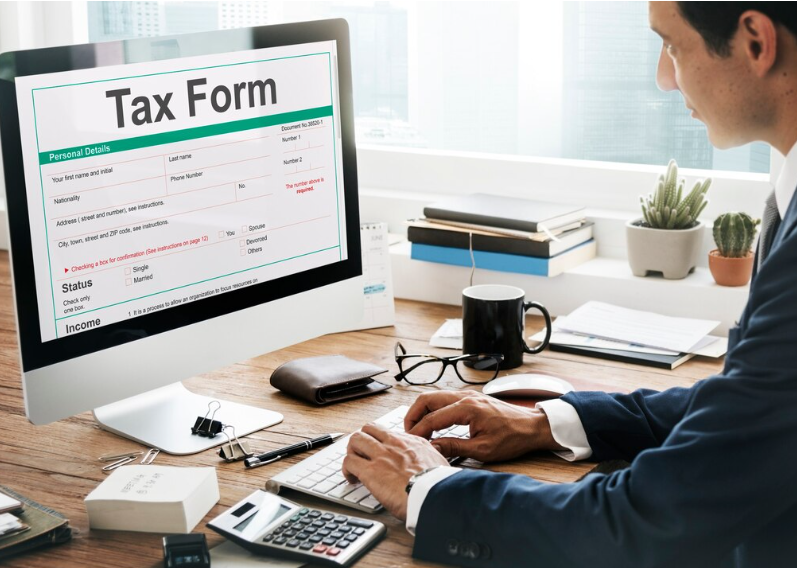Tax Forms Essential for Managing Employee Documentation
For small business owners, understanding the necessary tax and IRS forms related to hiring and employing staff is paramount. Whether operating as a sole proprietorship or managing a team, ensuring you are equipped with the right information for tax purposes is critical.
Understanding Form 1099
The Form 1099 is pivotal for reporting miscellaneous income, available primarily in two variants: the 1099-MISC and the 1099-NEC, the latter being more relevant for those engaging with freelancers or independent contractors. If your business pays more than $600 to an individual contractor within a year, it’s your responsibility to issue a Form 1099 to each applicable party, ensuring compliance and accurate tax reporting.
Navigating Form W-4
The Form W-4, also recognized as the Employee’s Withholding Certificate, plays a crucial role for employed individuals to declare personal information, their employment status, any dependents, and make necessary adjustments for their tax withholdings. For employers, collecting a completed W-4 for each full-time employee is essential to accurately calculate and withhold the correct amount from their paychecks for taxes.
Utilizing Form W-9
Employing independent contractors or freelancers necessitates the use of Form W-9, designated as the Request for Taxpayer Identification Number and Certification. This document verifies that an individual is authorized to work in the U.S. legally and is mandatory for clarifying their tax status. Detailed guidance on filling out this form can be invaluable for ensuring legal compliance and operational integrity in your hiring practices.
Essential Business Tax Documents to Issue and File
Business owners have the responsibility of issuing various documents throughout the fiscal year. Such activities not only keep the business in line with tax obligations but also ensure that both the IRS and employed individuals receive necessary information. Before finalizing your annual tax return, it’s imperative to prepare and submit several key documents.
The W-2 Form
The W-2, or Wage and Tax Statement, is a crucial document that businesses must provide to their employees, including both full-time and part-time staff. This form details an employee’s compensation, the amount of income taxes withheld, contributions to Social Security and Medicare taxes, and any non-taxable earnings. Businesses are mandated to distribute this form to all employees by January 31 of the succeeding tax year.
The Form 1040
The Form 1040 serves as the standard Individual Income Tax Return, allowing individuals to declare their filing status, report income, take the standard deduction, list dependents, and calculate either a refund or the amount owed. Though some business owners may opt to use this form for reporting annual income, the form frequently necessitates additional schedules to fully detail one’s financial picture.
Schedule C
Accompanying Form 1040, Schedule C is designated for sole proprietors to report Profit or Loss from Business. Filing Schedule C, along with a 1040, helps delineate the specifics of a business’s income and expenses, facilitating the IRS in determining the tax obligation while identifying potential deductions to lower the tax liability.
Form 1065
For businesses established as partnerships, Form 1065, or the U.S. Return of Partnership Income, is required. This form underscores that while partnerships themselves are not taxed, their profits and losses are passed through to the partners. Completing this form provides a comprehensive overview of the partnership’s financial activity over the tax year, ensuring transparency and compliance.
Form 1120
Businesses recognized as domestic corporations must file Form 1120, the U.S. Corporation Income Tax Return. This form is crucial for larger businesses set up as corporations, outlining their income tax liability based on corporate earnings. The detailed steps within Form 1120 allow businesses to accurately report and substantiate their taxable income and deductions.
Conclusion
Navigating the complex world of tax documentation is a fundamental aspect of running a successful small business. By understanding and accurately handling various essential forms—ranging from employee documentation to critical business tax filings—you safeguard your business against potential legal issues and optimize your financial operations.
This guide has endeavored to simplify the intricate process of managing tax forms, aiming to equip you with the knowledge to ensure compliance and efficiency. Remember, staying informed and proactive in your tax obligations not only contributes to the smooth operation of your business but also enables you to focus on growth and development.
For complex situations or uncertainties, seeking professional advice from a tax advisor can provide tailored guidance suited to your business’s unique needs.



